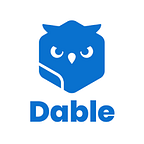RTB(Real Time Bidding) The New Paradigm to Online Advertising — Part 1
Programmatic Advertising, the Evolution of Online Advertising
The online advertising market has rapidly increased over a short period of time. It is continuously growing to become more simple, less expensive, and reach premium customers.
In the past, advertisers (or agencies) had to continue purchasing advertising inventory by directly contacting the media to negotiate unit price negotiations, contracts etc. until the advertiser exposed the advertisement to a specific media. This method takes a lot of time and resource. Also, since the advertisement inventory is purchased in large quantities, such as in media and web page, the advertisements are exposed to users that do not match the advertiser’s desired target resulting in poor performance.
On the other hand, now programmatic buying, which purchases advertising inventory through an automated software system, has become widely popular. The system effectively executes what people were doing. Programmatic advertising automatically analyzes the user, and exposes ads that match the user’s gender, age, and interests. It also analyzes advertising data to optimize campaigns.
Programmatic advertising accounts for 84.9%(59.45 billion dollars) of the US online advertising in 2019 with outstanding results and will account for 88% until 2021, eMarketer predicts. RTB (Real Time Bidding) is in the pinnacle of programmatic advertising.
RTB(Real Time Bidding), a new Paradigm for online advertising
RTB refers to the method of purchasing ad inventory on a per-impression basis via real time bidding. Many people are probably familiar with RTB through global advertising platforms such as Google and Facebook.
Unlike the past, where advertisers buy large amounts of inventory at a fixed price, RTB exchanges ad inventory in real time on a per impression basis. In order to purchase the desired inventory, advertisers participate in bidding, and media companies sell the inventory to advertisers who offer the best price. This process takes place within 0.1 seconds.
RTB has become a new paradigm in the online advertising market as advertisers can purchase the inventory they want at a reasonable price, and media companies can sell their inventory at the best price.
RTB Ecosystem & Important Players
In the past, only advertisers (or agencies) and media companies existed, whereas now the online advertising market have become bigger and more complex and new players have emerged. With more space to advertise (because there are more media outlets), advertisers have made it difficult to advertise through choosing an efficient media, and it is difficult for media companies to know which advertisers want to purchase at the best cost.
Therefore, ‘Ad Network’ which connects numerous advertisers and media, DSP (Demand Side Platform) that helps advertisers purchase inventory, SSP (Supply Side Platform) that aids with media’s inventory sales, and Ad Exchange where DSP & SSP inventory trading is performed, emerges.
Ad Network
The ad network is an intermediary platform that connects advertisers who seek to purchase advertising inventory with media companies that wish to sell. The main function of the ad network is to combine and categorize the numerous inventories of media companies to match and sell according to the advertisers’ needs. Through ad network, advertisers can increase the likelihood of exposing ads to desired users, and media companies can sell their inventory more efficiently.
DSP (Demand Side Platforms)
DSP is a platform that helps advertisers (agencies) manage and purchase inventory held by multiple ad networks through a single interface. Through DSP, advertisers (agencies) can efficiently purchase various inventory according to target information desired by advertisers such as gender, age, region, and interests.
SSP (Supply Side Platforms)
SSP is a system that helps media companies automatically sell and manage their inventory. SSP can maximize the profits of media companies by providing advertisement inventory to all advertisers who are likely to purchase media inventory, including Ad Exchange.
Ad Exchange
Ad Exchange is a step further in the ad network model. Ad Exchange is connected to numerous ad networks, DSPs, and SSPs, helping you buy and sell large amounts of ad inventory. Here, the price is achieved through RTB.
The biggest change with the introduction of RTB is that advertisers changed the way of purchasing the inventory of ‘target users’ by analyzing the behavior patterns of website users, not the ‘websites’ used by target users.
Unlike in the past, when a large amount of inventory for a specific media was purchased, RTB allows the purchase of inventory in one impression unit, so that the advertiser can show advertisements only to the user who is most suited as the target user.
In the next post, we will discuss the RTB process and the main bidding models.
